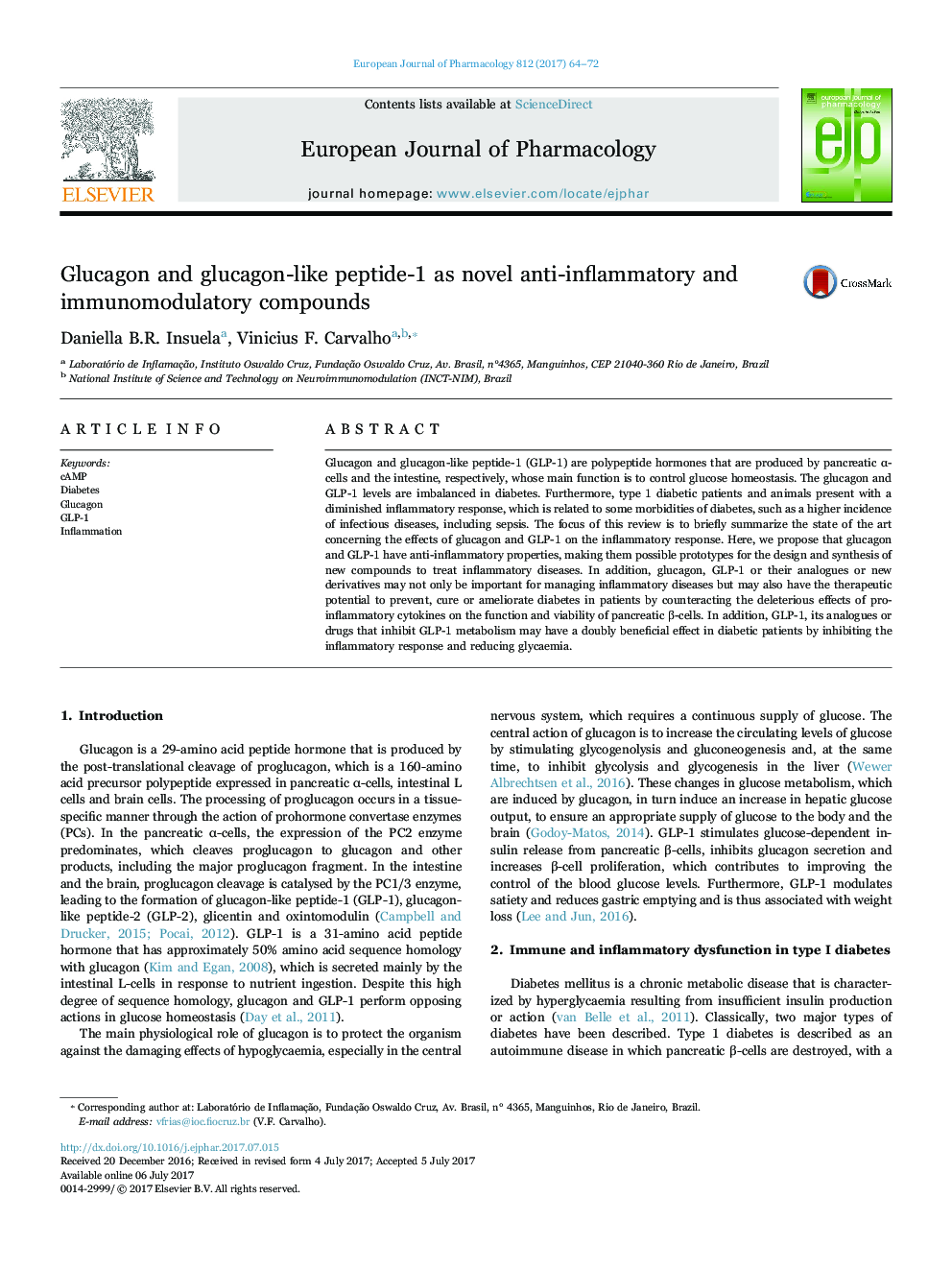| Article ID | Journal | Published Year | Pages | File Type |
|---|---|---|---|---|
| 5554425 | European Journal of Pharmacology | 2017 | 9 Pages |
Glucagon and glucagon-like peptide-1 (GLP-1) are polypeptide hormones that are produced by pancreatic α-cells and the intestine, respectively, whose main function is to control glucose homeostasis. The glucagon and GLP-1 levels are imbalanced in diabetes. Furthermore, type 1 diabetic patients and animals present with a diminished inflammatory response, which is related to some morbidities of diabetes, such as a higher incidence of infectious diseases, including sepsis. The focus of this review is to briefly summarize the state of the art concerning the effects of glucagon and GLP-1 on the inflammatory response. Here, we propose that glucagon and GLP-1 have anti-inflammatory properties, making them possible prototypes for the design and synthesis of new compounds to treat inflammatory diseases. In addition, glucagon, GLP-1 or their analogues or new derivatives may not only be important for managing inflammatory diseases but may also have the therapeutic potential to prevent, cure or ameliorate diabetes in patients by counteracting the deleterious effects of pro-inflammatory cytokines on the function and viability of pancreatic β-cells. In addition, GLP-1, its analogues or drugs that inhibit GLP-1 metabolism may have a doubly beneficial effect in diabetic patients by inhibiting the inflammatory response and reducing glycaemia.
